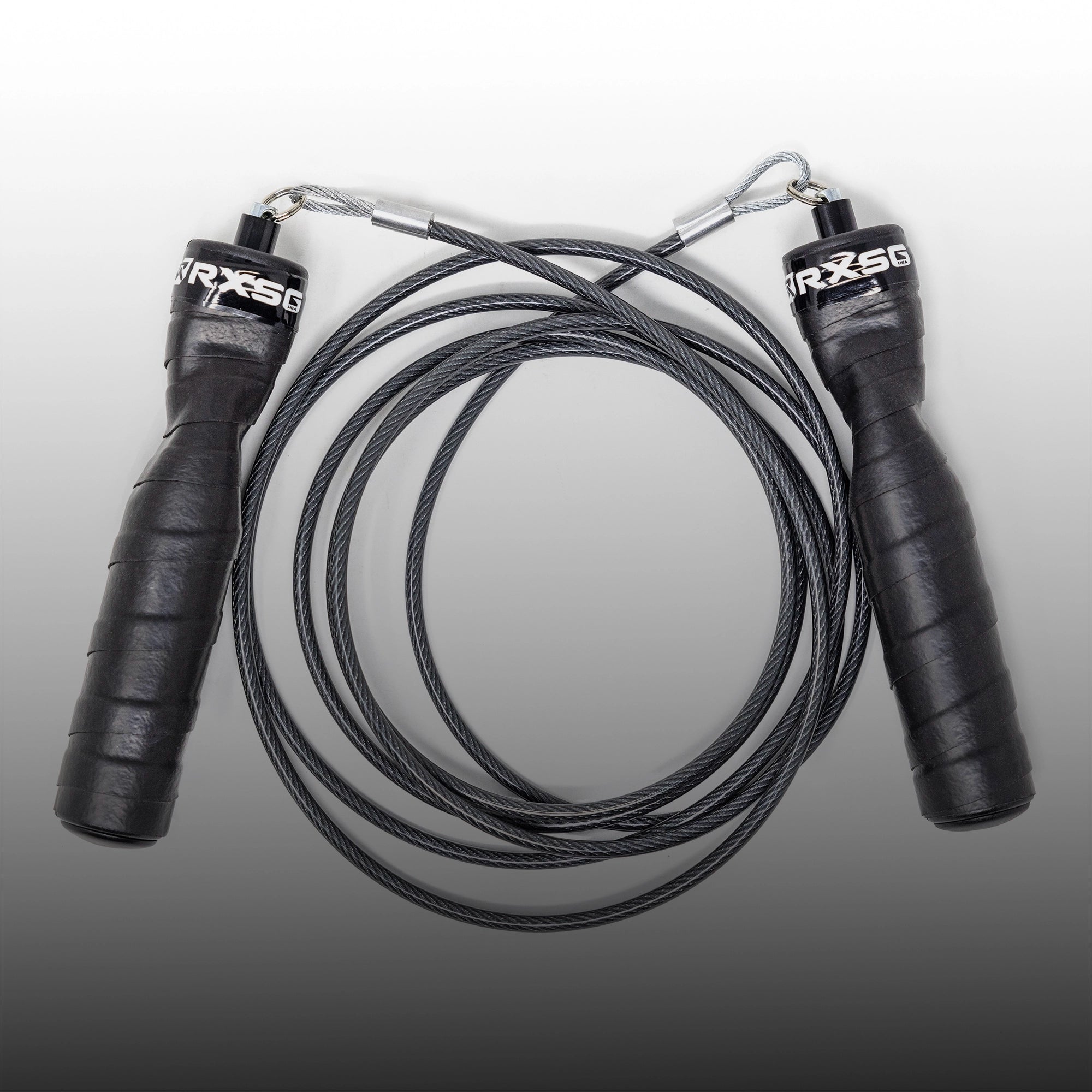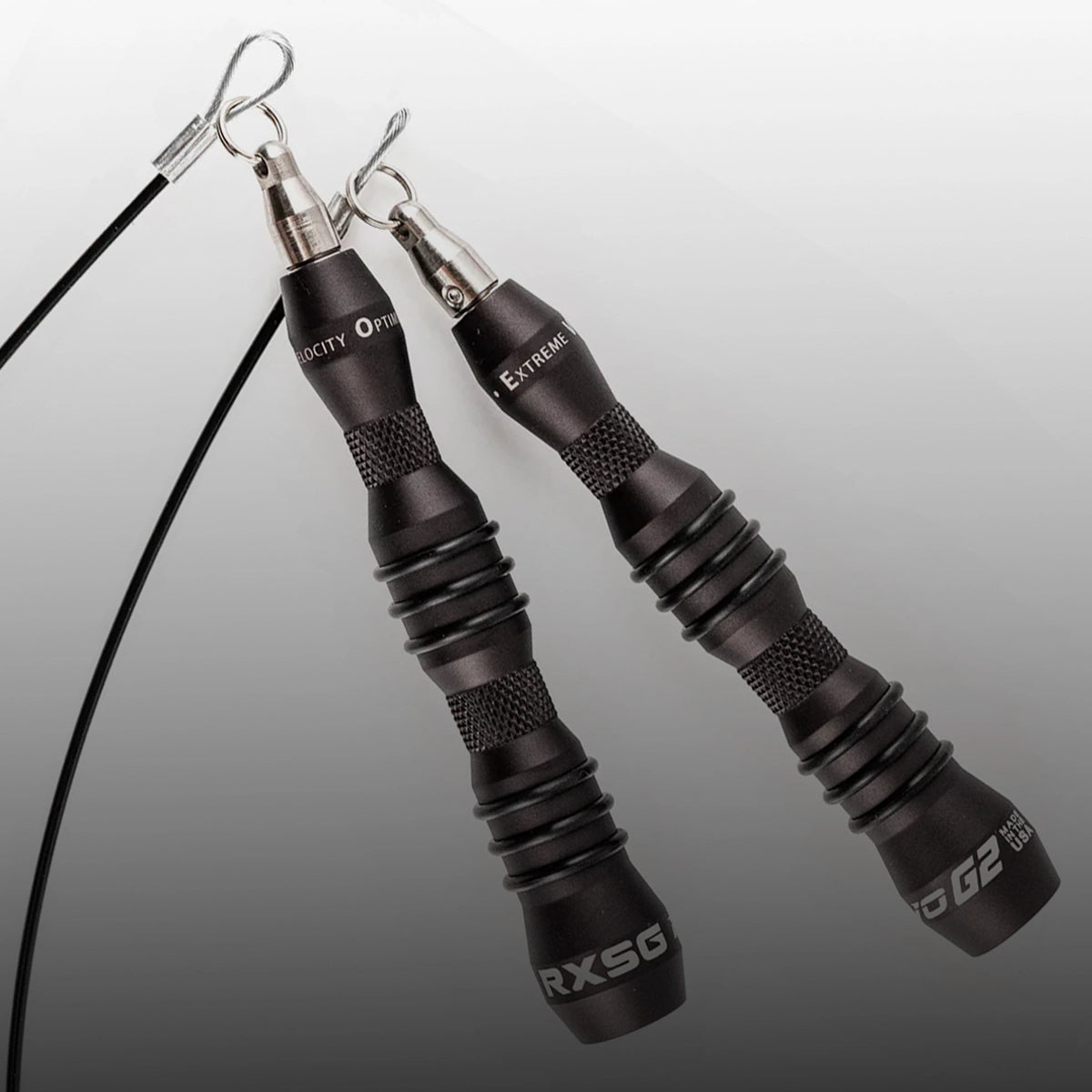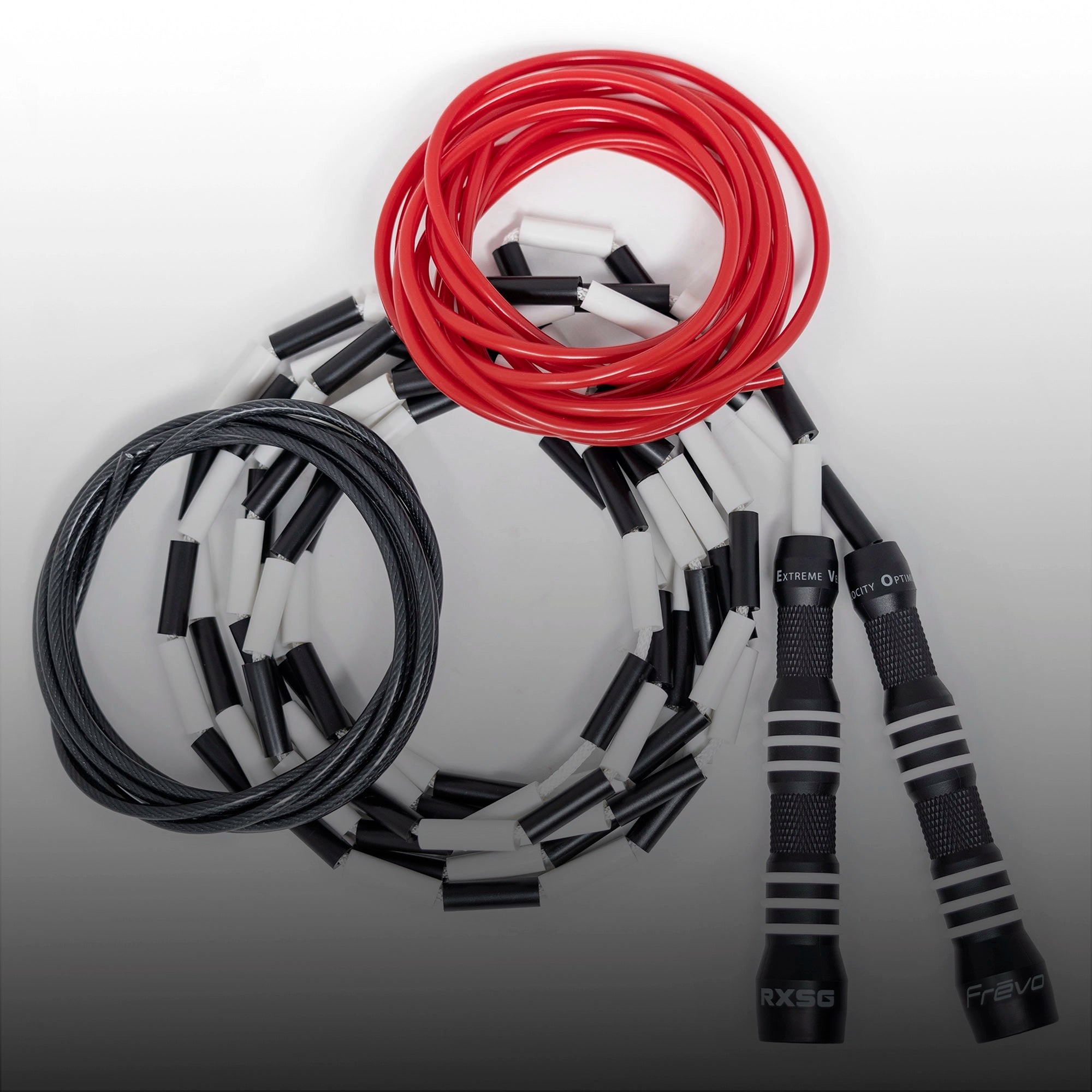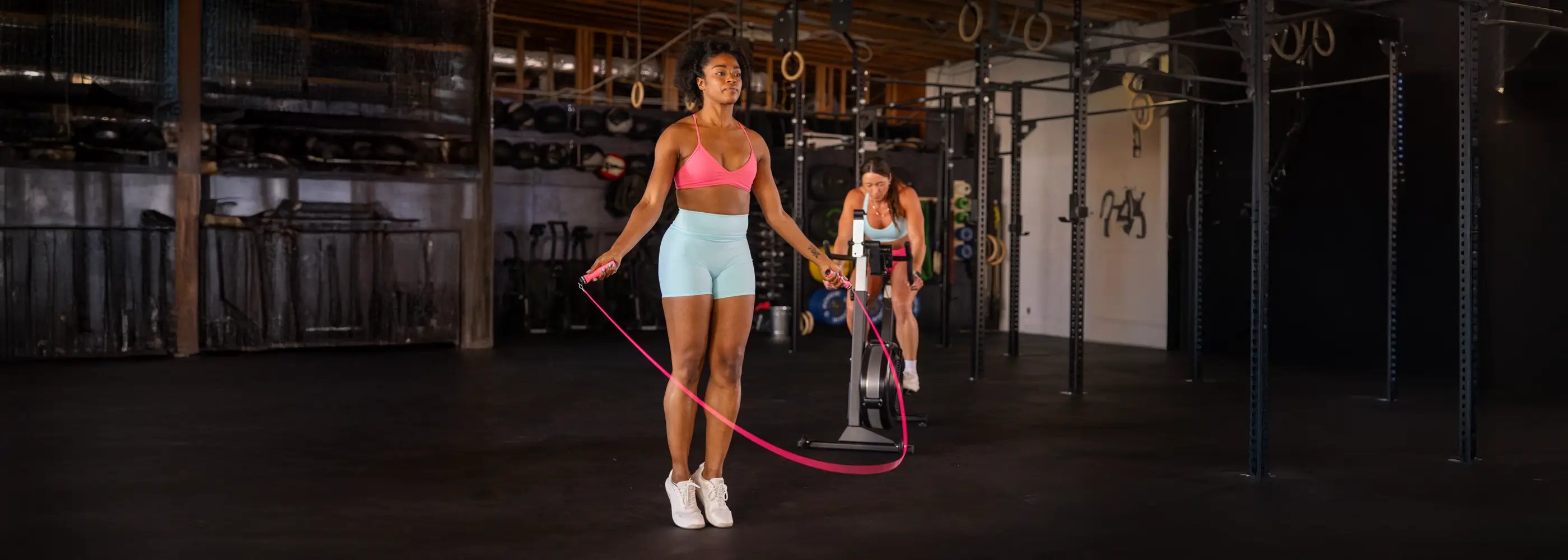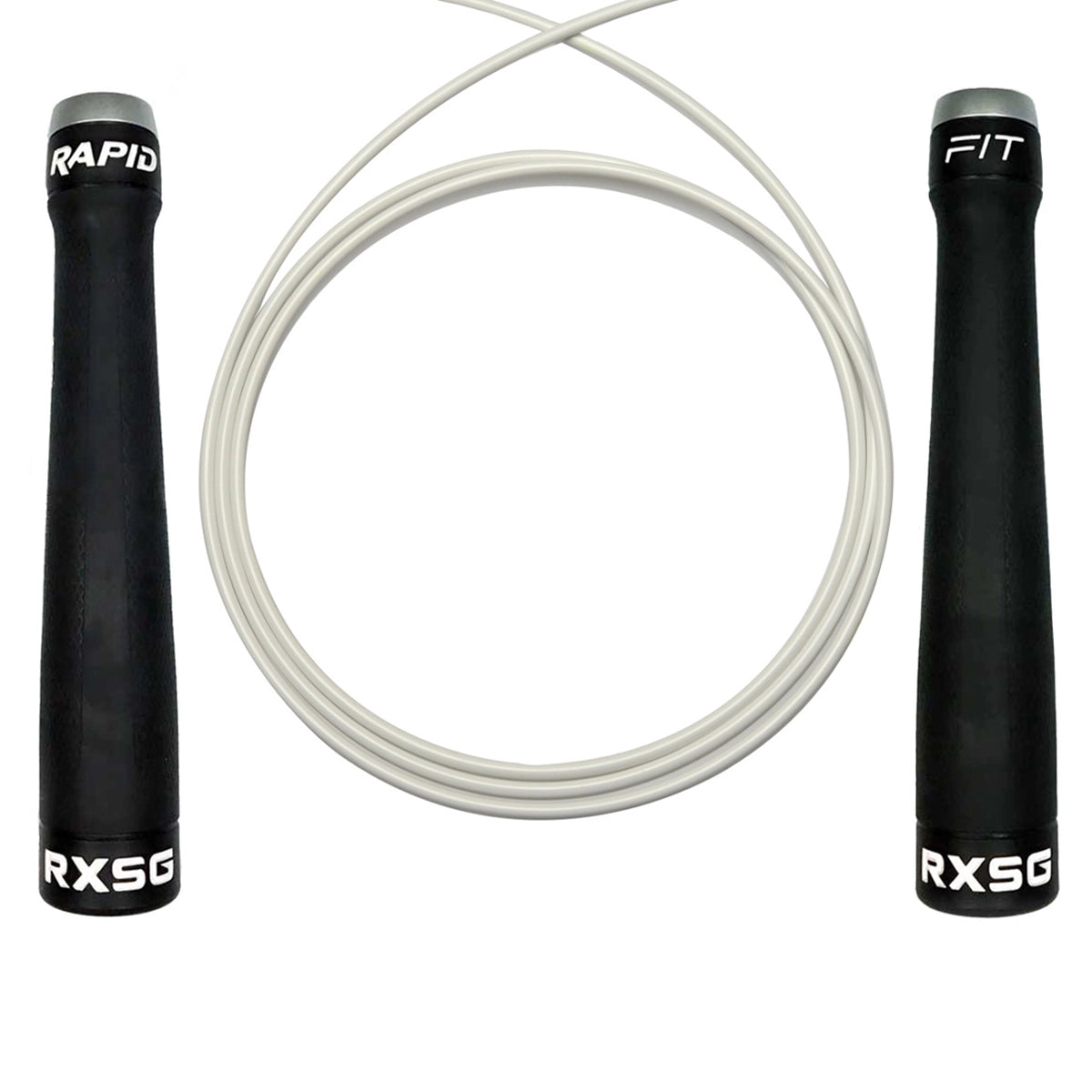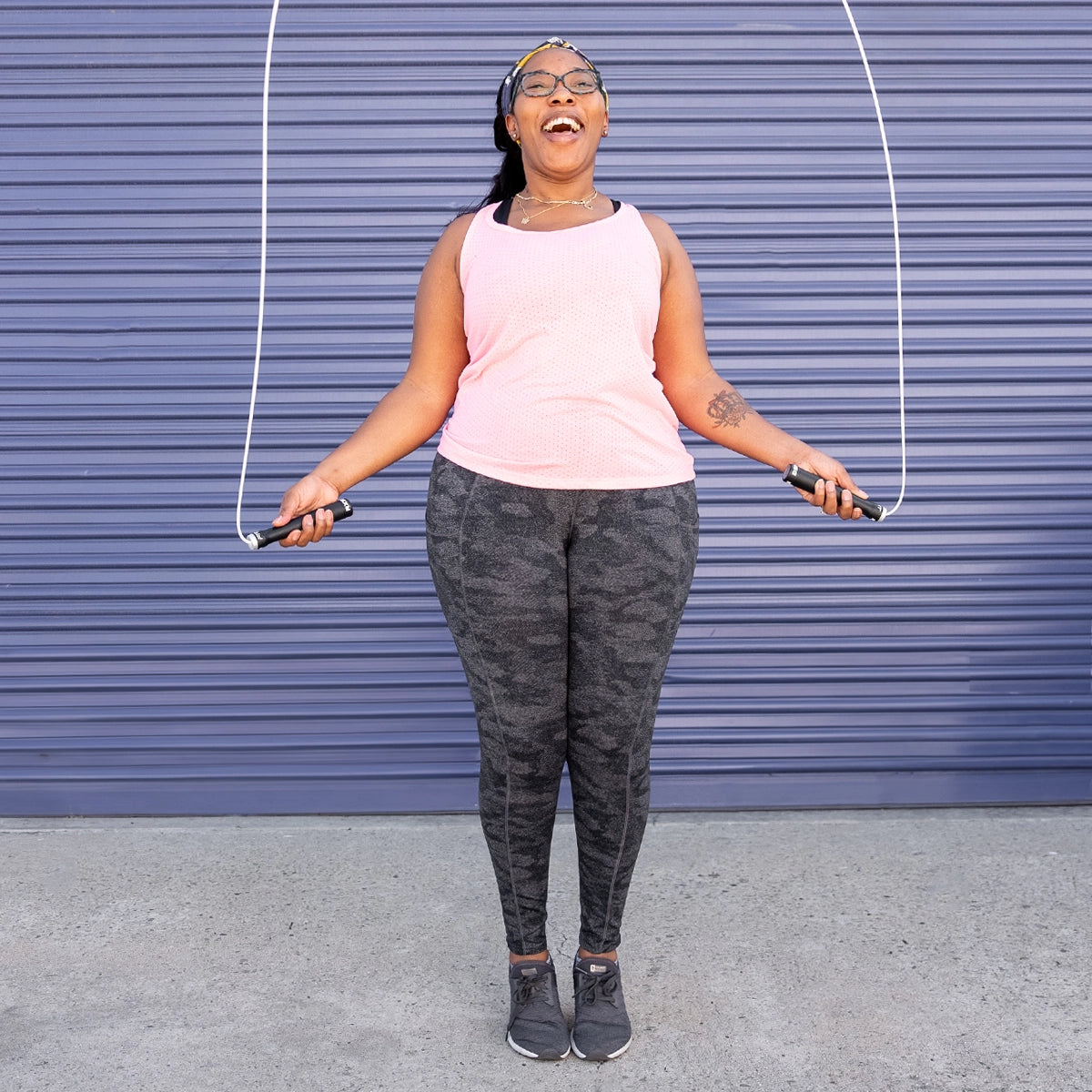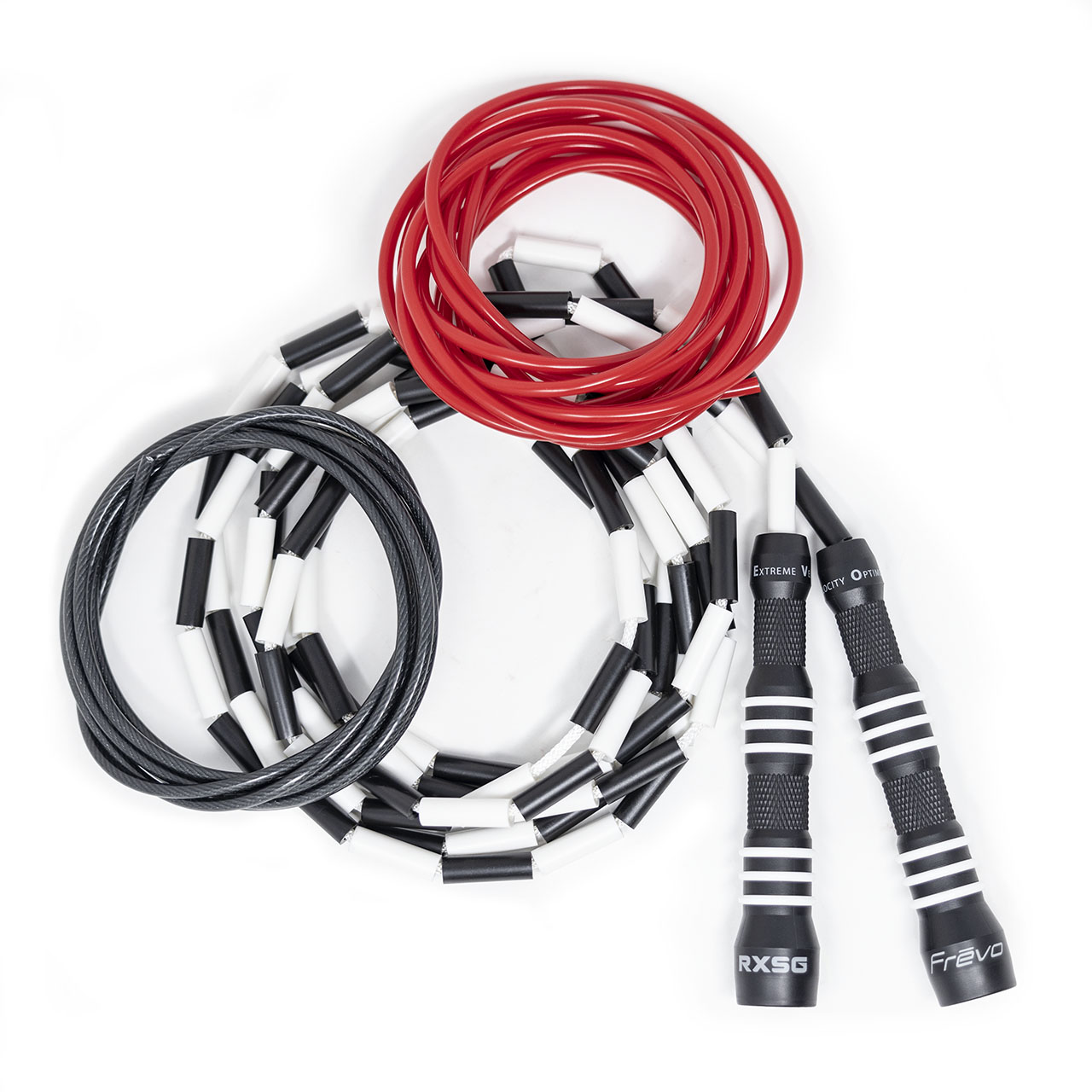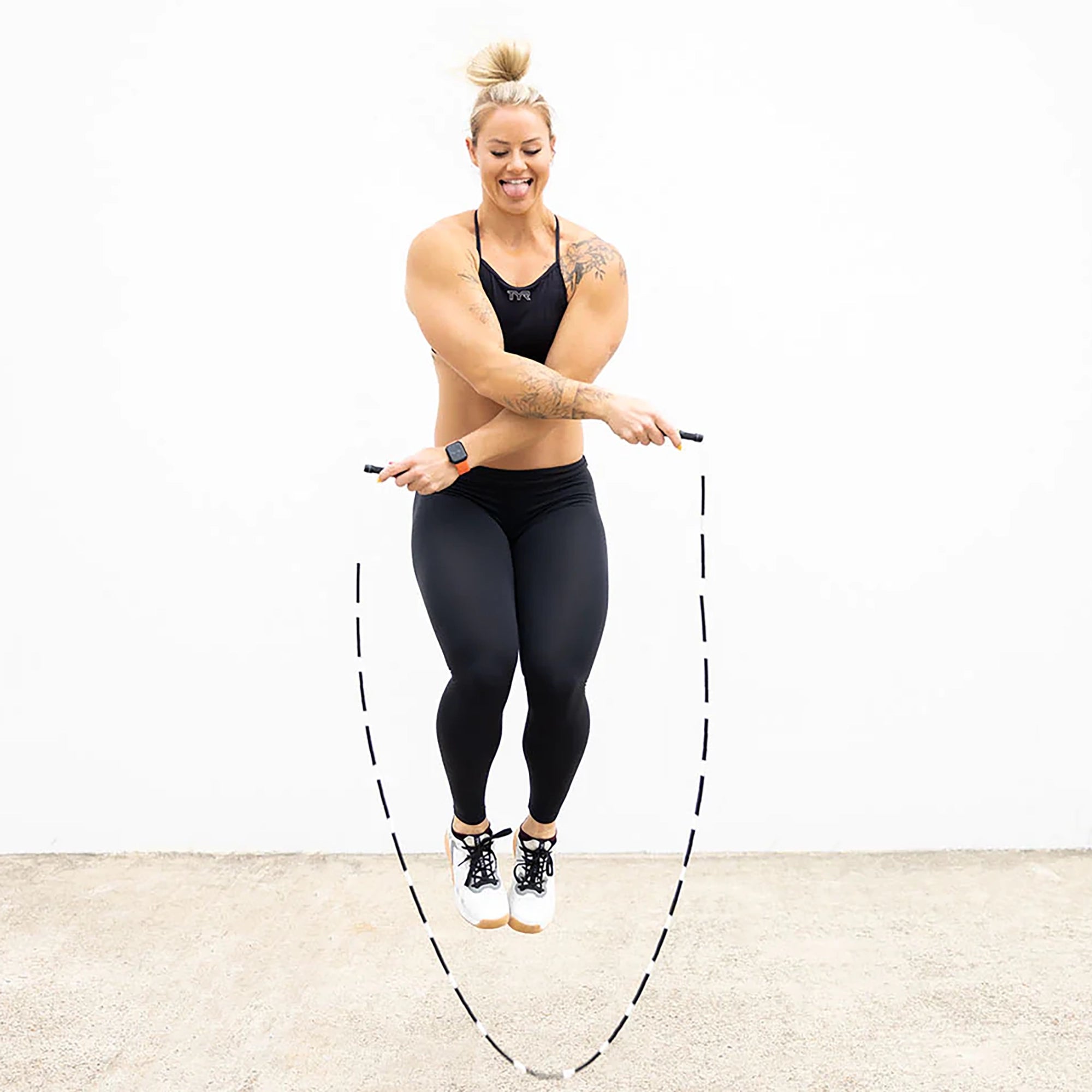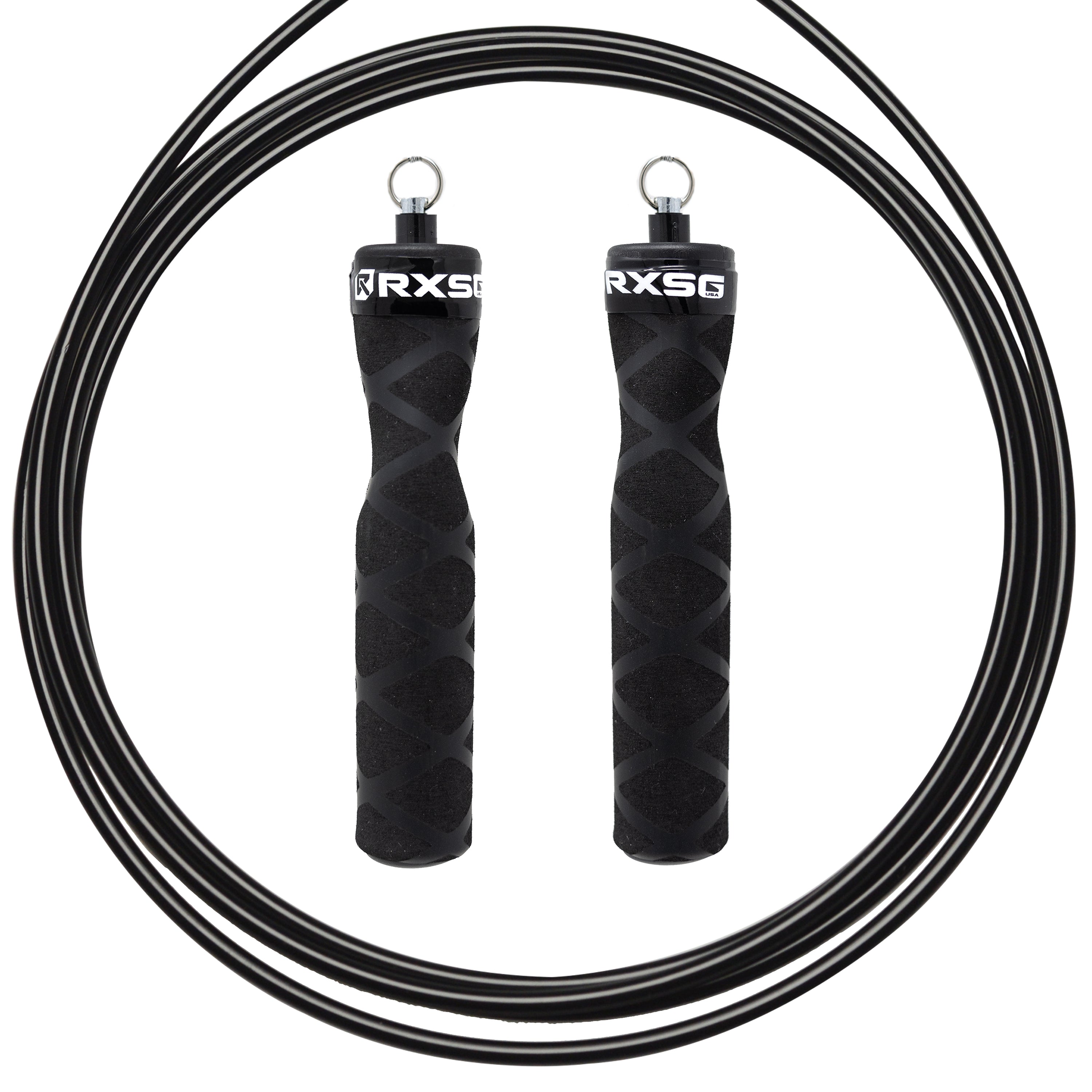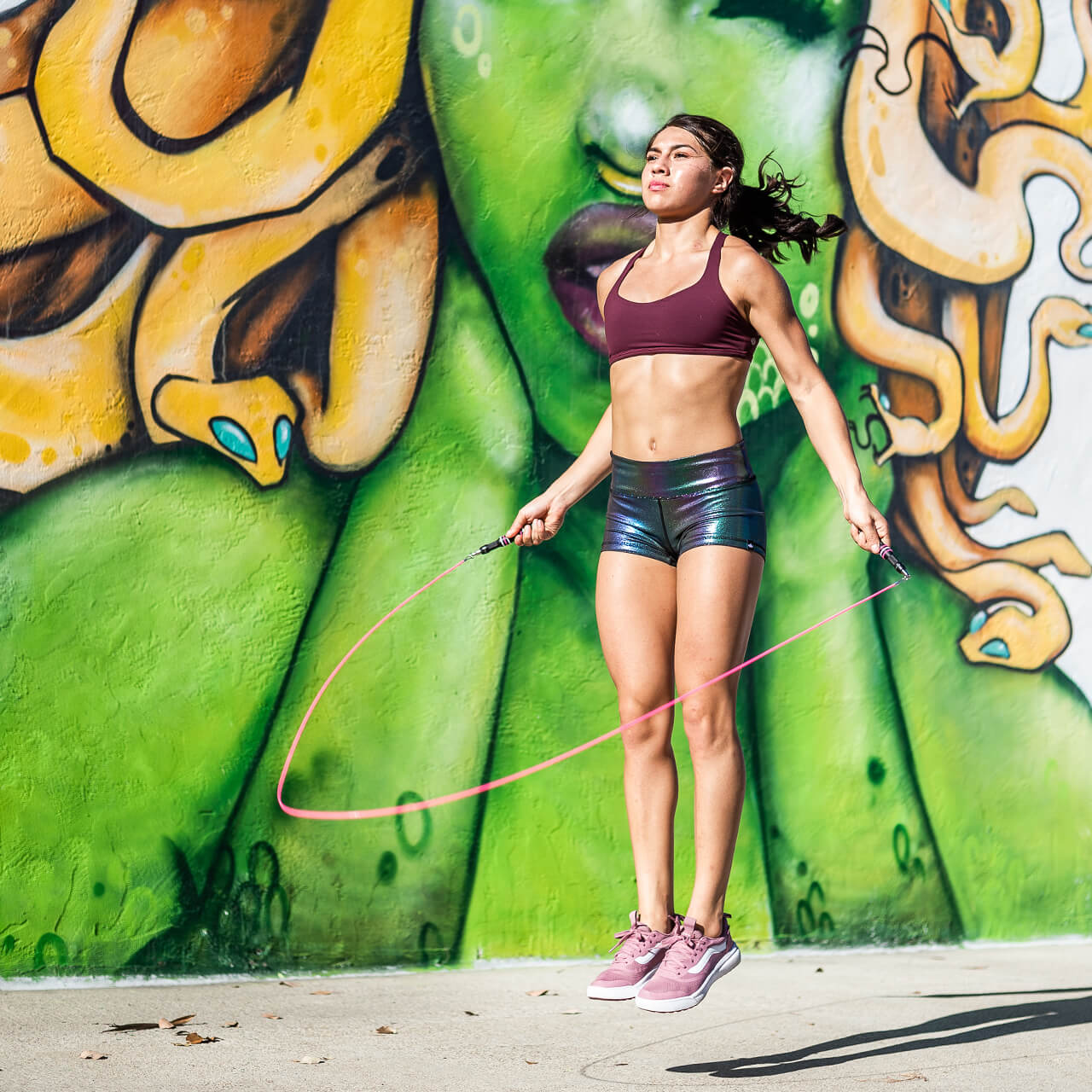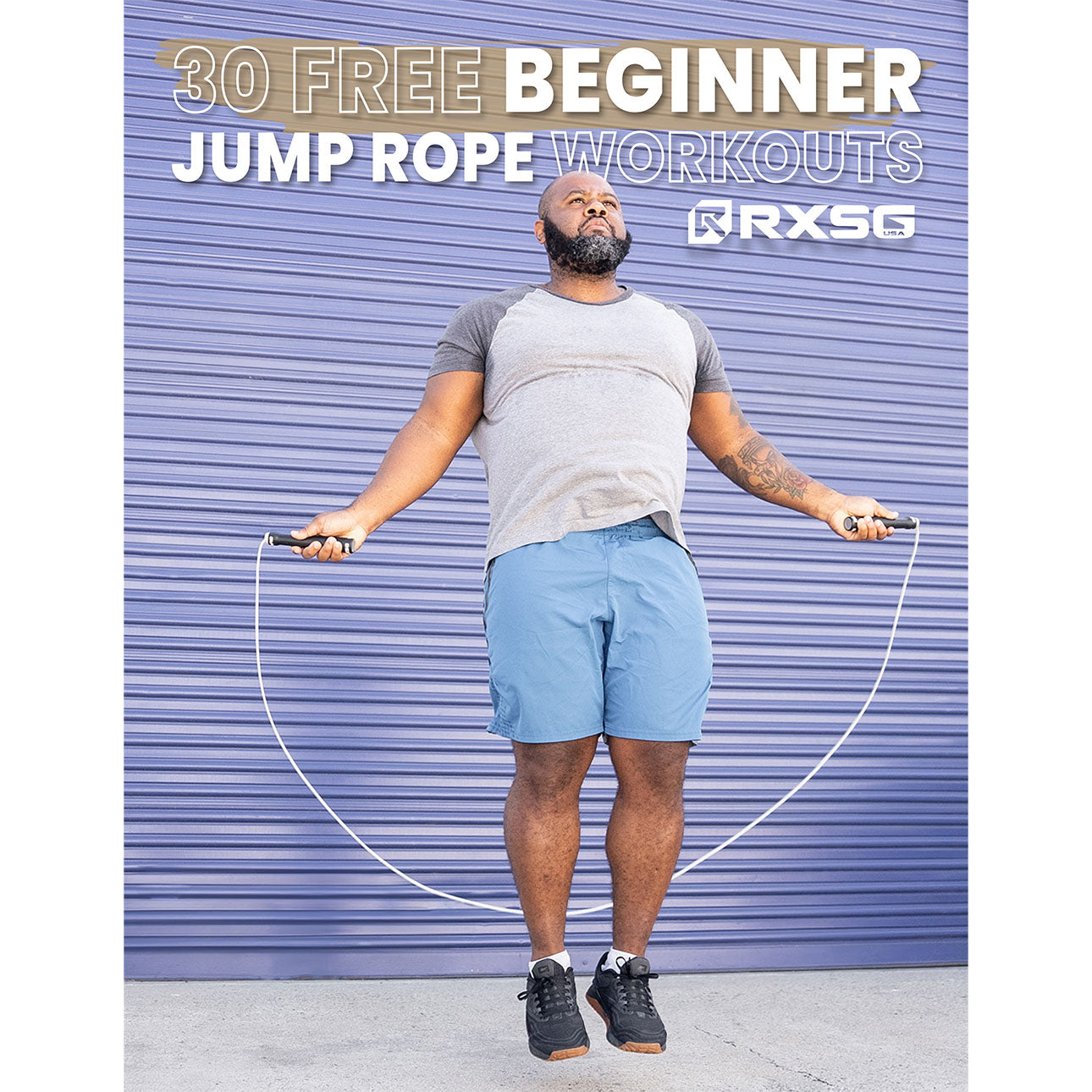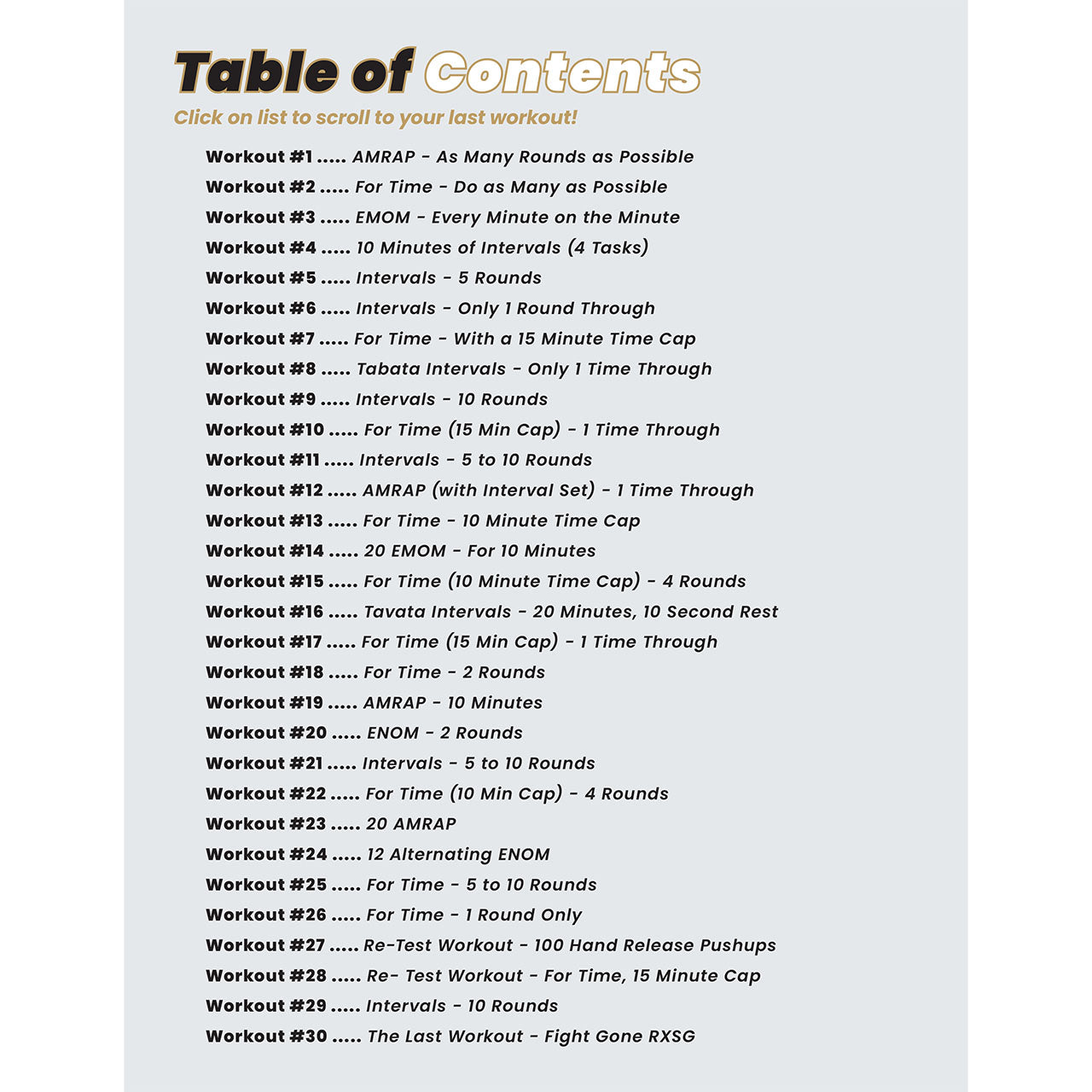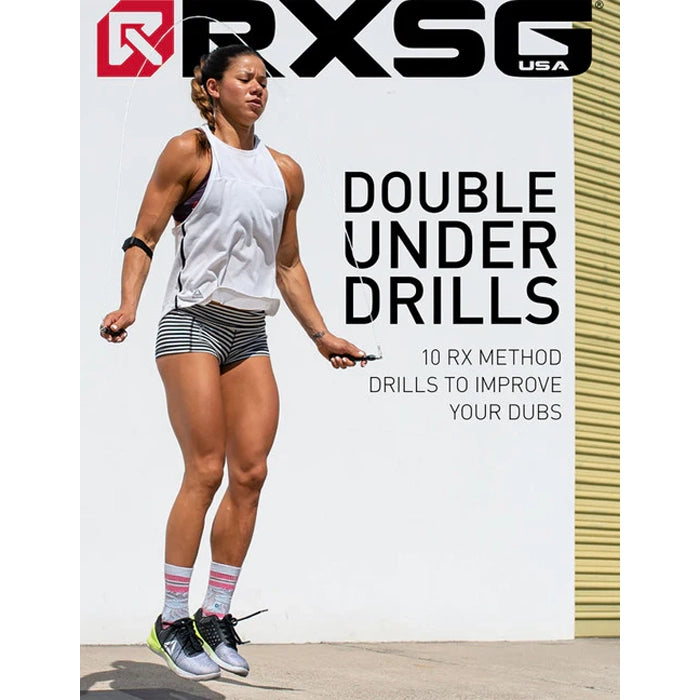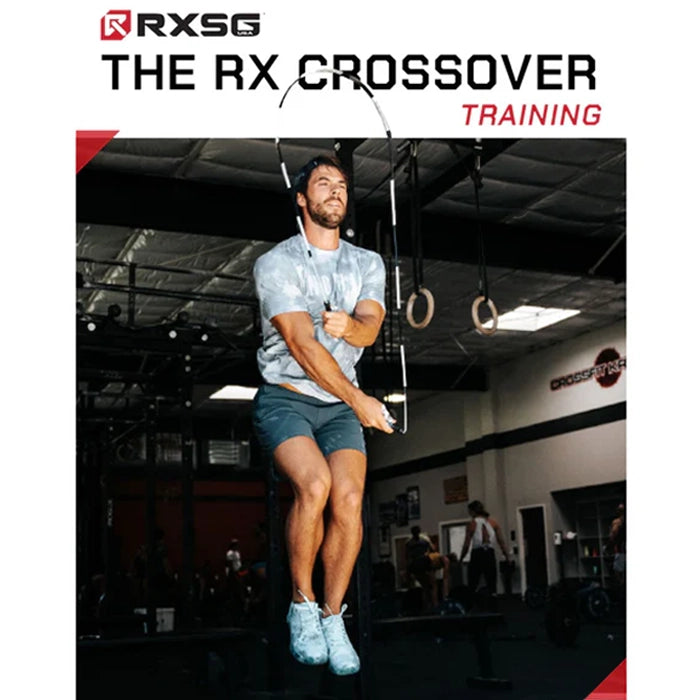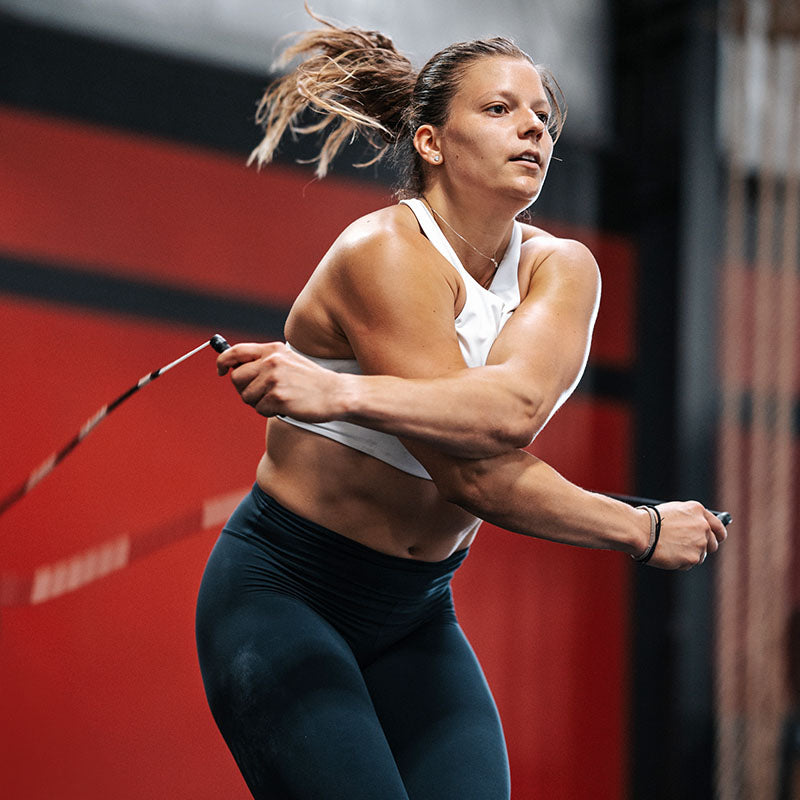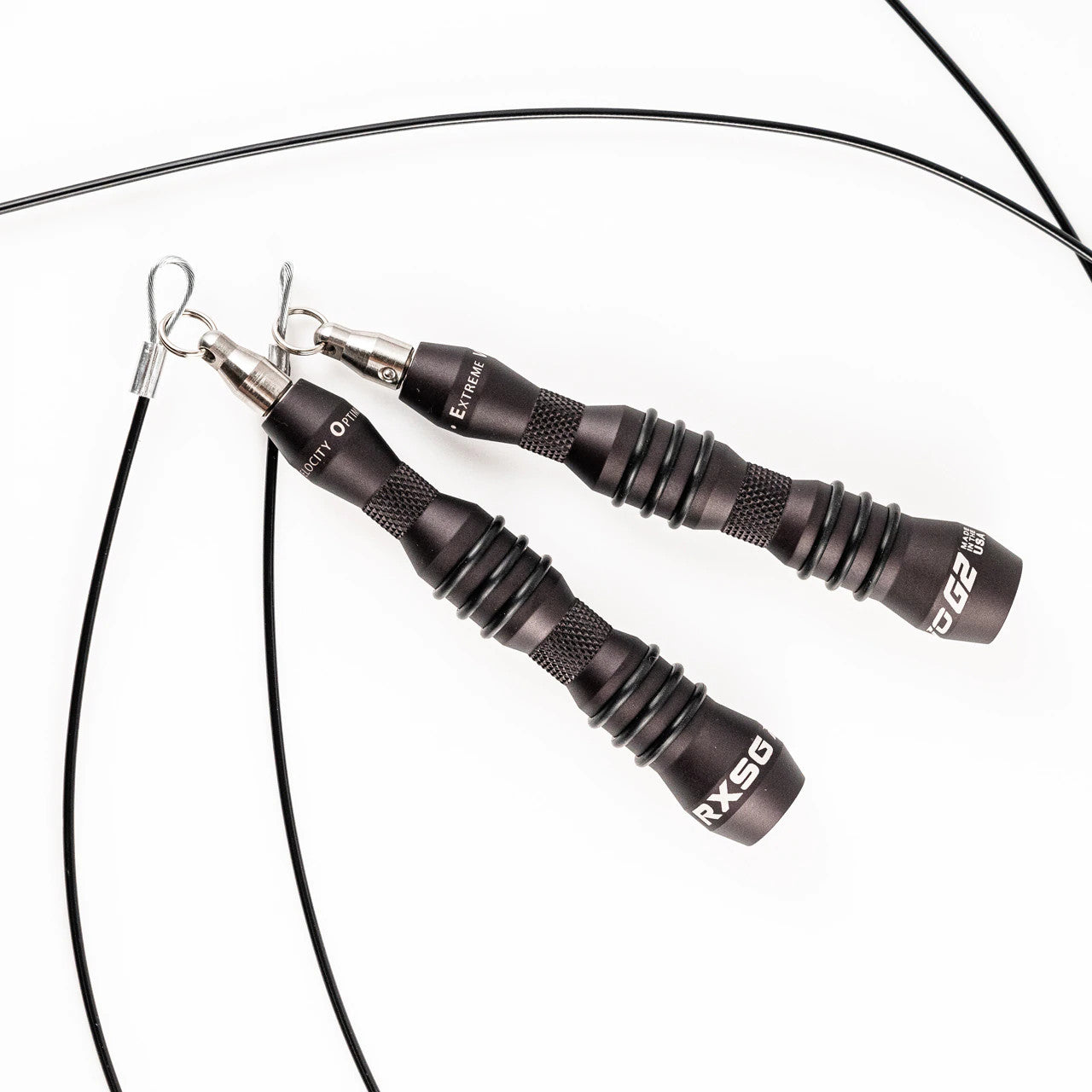Double unders have long been the bane of many fitness enthusiasts, creating a sharp divide between those who can do them with ease and those who struggle endlessly.
Double unders are a movement where the jump rope passes under your feet twice in one jump and are seen by many as a high-skill, high-intensity workout component. But what if I told you they aren’t as complicated as they seem? By reframing your perception of a double under and with the right approach, timing, and mindset, anyone can crack the code to double unders. Let’s break it all down and solve this mystery once and for all.
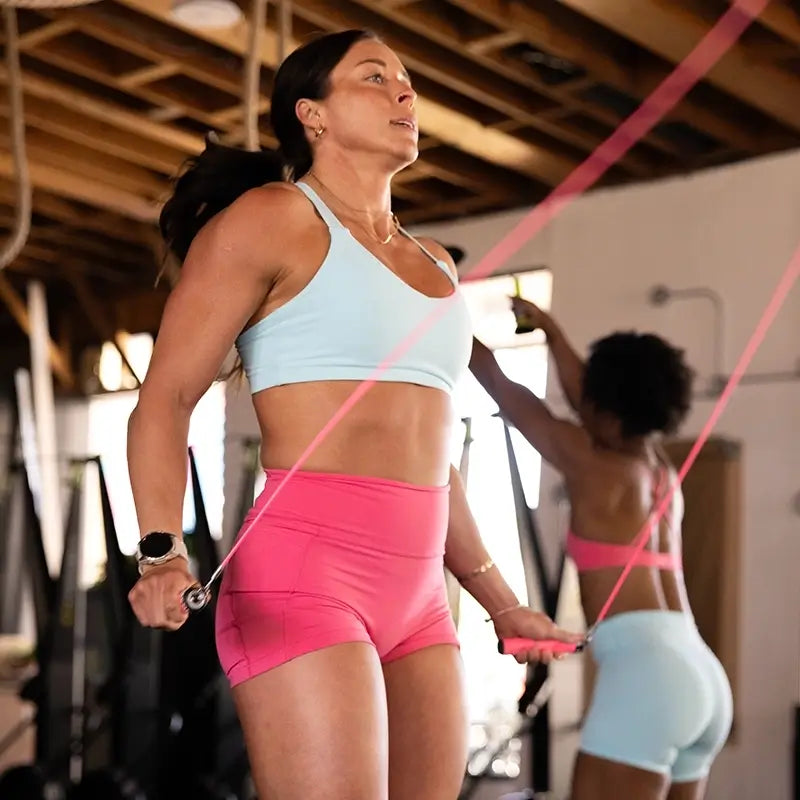
Why Double Unders Matter
Double unders are a phenomenal way to elevate your fitness. They improve coordination, stamina, and overall conditioning while engaging your entire body. Athletes often use double unders in functional fitness workouts, circuit training, or as a cardio finisher because they combine endurance, agility, coordinatio and precision.
However, double unders come with a learning curve that can feel unattainable for many. This guide will break the skill into manageable pieces, dispel common misconceptions, and give you actionable tips to get you from frustrated beginner to double under master.
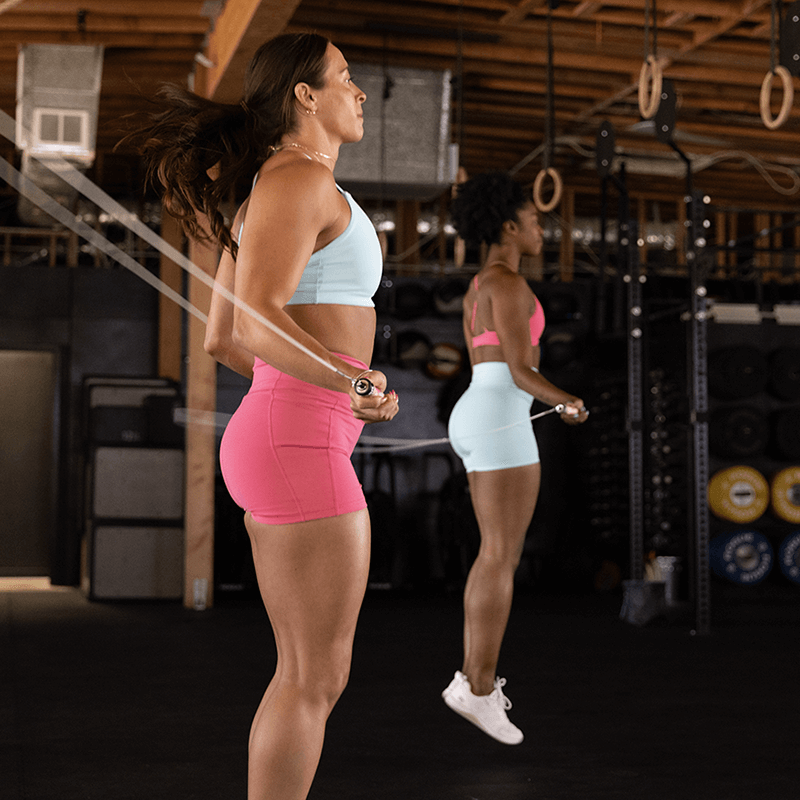
Let’s start with a basic definition: Most people view a double under as a skill performed with a jump rope, where the rope completes two full rotations under your feet during a single jump. Sounds simple enough, right? Yet so many people tend to overcomplicate it.
Most people mistakenly think a double under begins with a massive jump, followed by two full rope rotations around their body and twice under their feet before landing. This misconception makes people feel they have so much to do in so little time they end up overreacting when attempting double unders. That is why most beginners often develop poor timing, expend wasted energy, and end up with severe frustration.
Here’s the reality: A double under is not about speed or force—it’s about timing and control. A much simpler way to think about a double under is one jump at the right time and one full rope rotation around the body. The big key is getting the rope into position right before the jump. The first “under” happens at the beginning of the jump, the second you leave the ground and the second “under” happens at the height of the jump or on the way down. But essentially, it’s one jump followed by one rotation. That’s where the setup rotation comes into play.
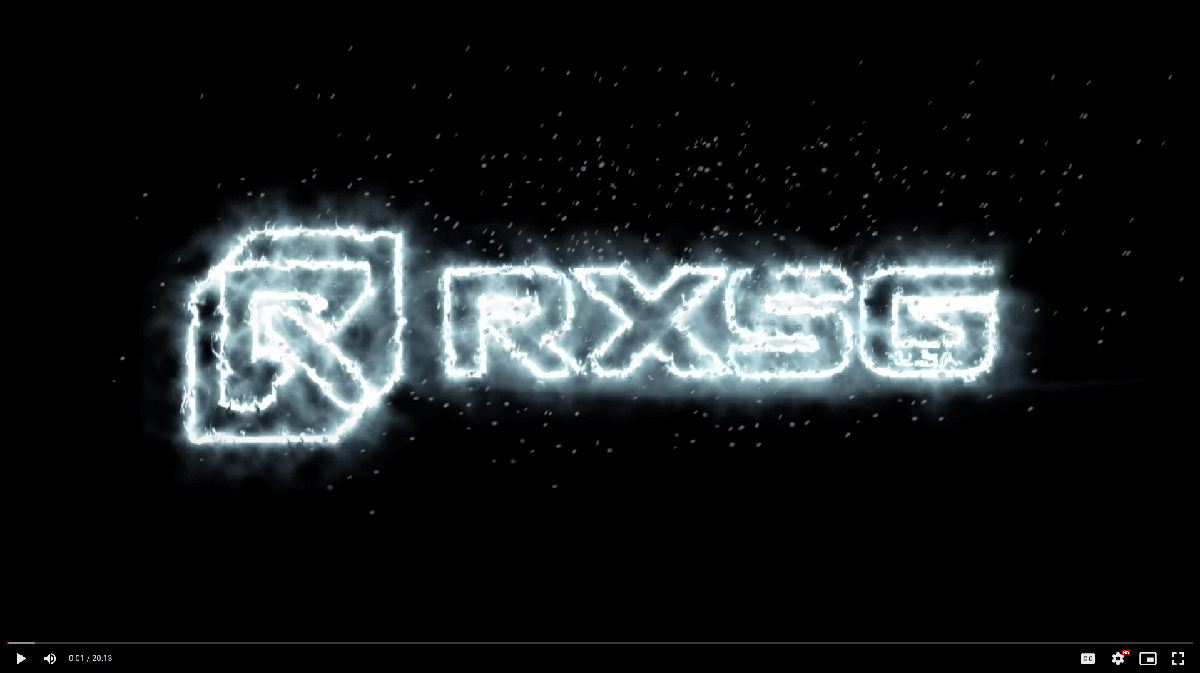
HOW TO DO A DOUBLE UNDER
Get the right jump rope
Each double under involves two distinct rotations:
- The Passive Rotation (Setup): This sets the rope in motion, gets the rope under tension and positions the rope down by your feet before the jump.
- The Active Rotation (Execution): This occurs during the jump, where the rope completes the first pass under your feet the instant you leave the ground and the second pass under your feet before you land or rebound into the next rep.
*Important note, once the rope passes under your feet the second time it immediately begins the passive rotation again of your next rep.
Once you understand the roles of these two rotations, you’ll see that double unders are more about rhythm and timing than raw effort.
Breaking It Down Step-by-Step
1. Start with the Right Gear
Your jump rope matters more than you think. Too long or too short, and you’ll trip; too light, and you’ll struggle to control it. Here’s what to look for:
- Length: The rope should be your height plus 2.5–3 feet.
- Weight: Opt for a rope weighing 3–4 ounces. Heavier ropes are easier to control, especially for beginners, while ultra-light speed cables are better suited once you’ve learned double unders.
Picking up a jump rope changed my life in ways I never expected. It wasn’t just about getting fit—it opened the door to new friends, the CrossFit community, and a love for staying active.
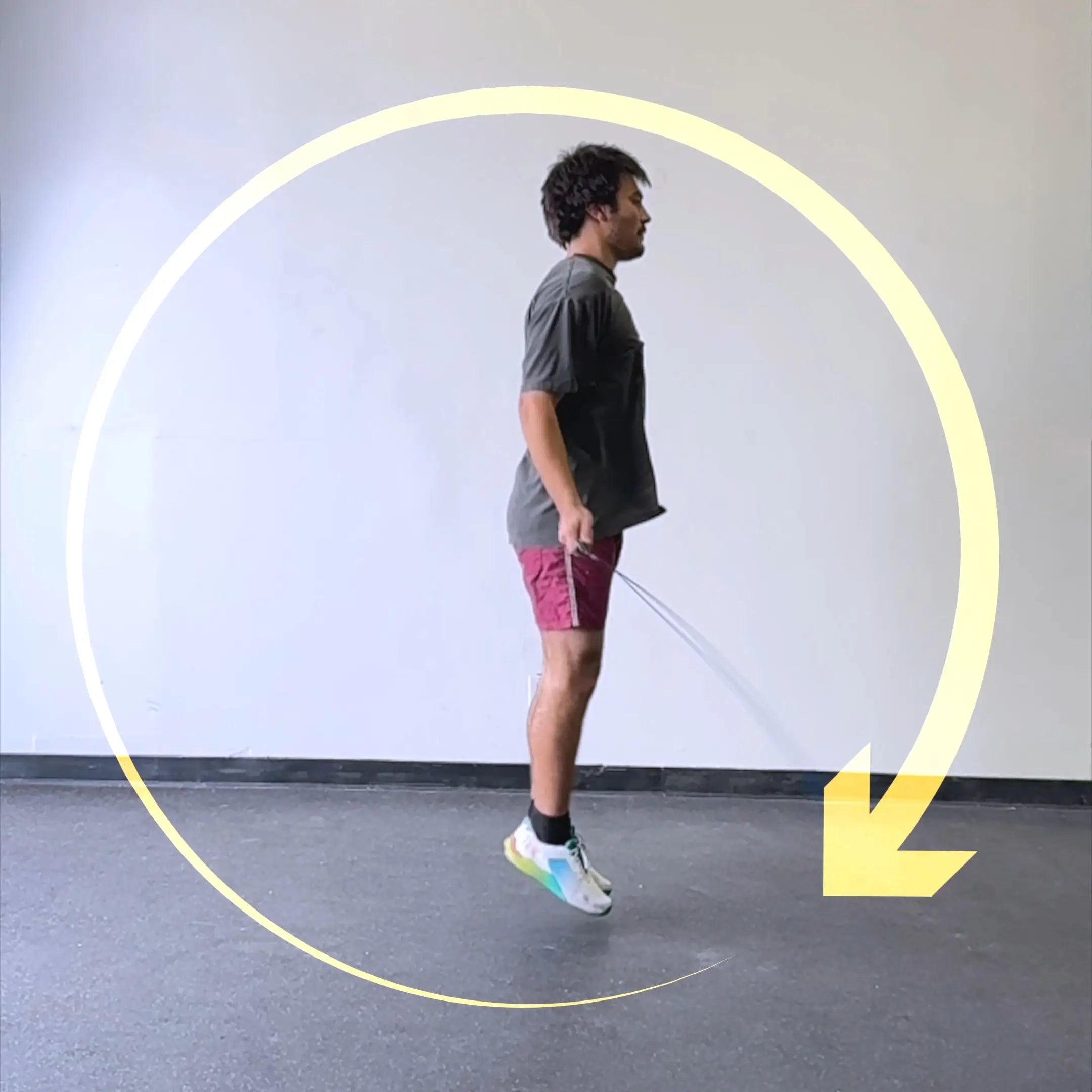
2. Master the Passive Rotation
The passive rotation is where many people stumble. This initial movement sets the stage for your double under, so getting it right is critical. Here’s how:
- Start the rope in motion while keeping your elbows down and shoulders relaxed.
- Drop your hands directly under your shoulders and right beside your hips. Anchor your hands here but keep them relaxed and snappy.
- The rope’s speed during this rotation should feel similar to a single under—calm and steady. The key is to have enough tension to feel connected to your rope and control the speed.
- Wait for the rope to swing down to knee level or two feet in front of your toes. That’s when you should begin your jump.
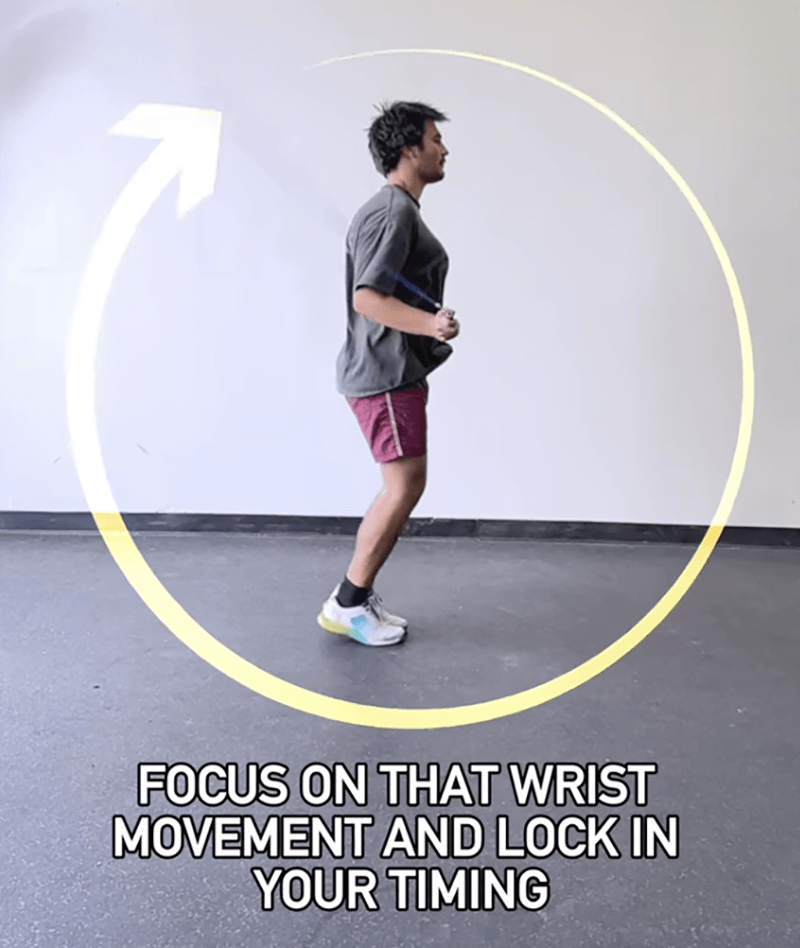
3. Perfect Your Jump
Jumping too soon or erratically are common mistakes. For double unders, your jump should be:
- High: Aim for 3–5 inches off the ground—allow enough time for the rope to clear one full rotation at a controlled speed.
- Patient: Wait for the rope to move into position down near your knee level. You can bend your knees and prepare for the jump but wait until the rope is in position.
- Controlled: Keep your legs straight but not stiff. Practice full extension from your head to your toes once you’re in the air.
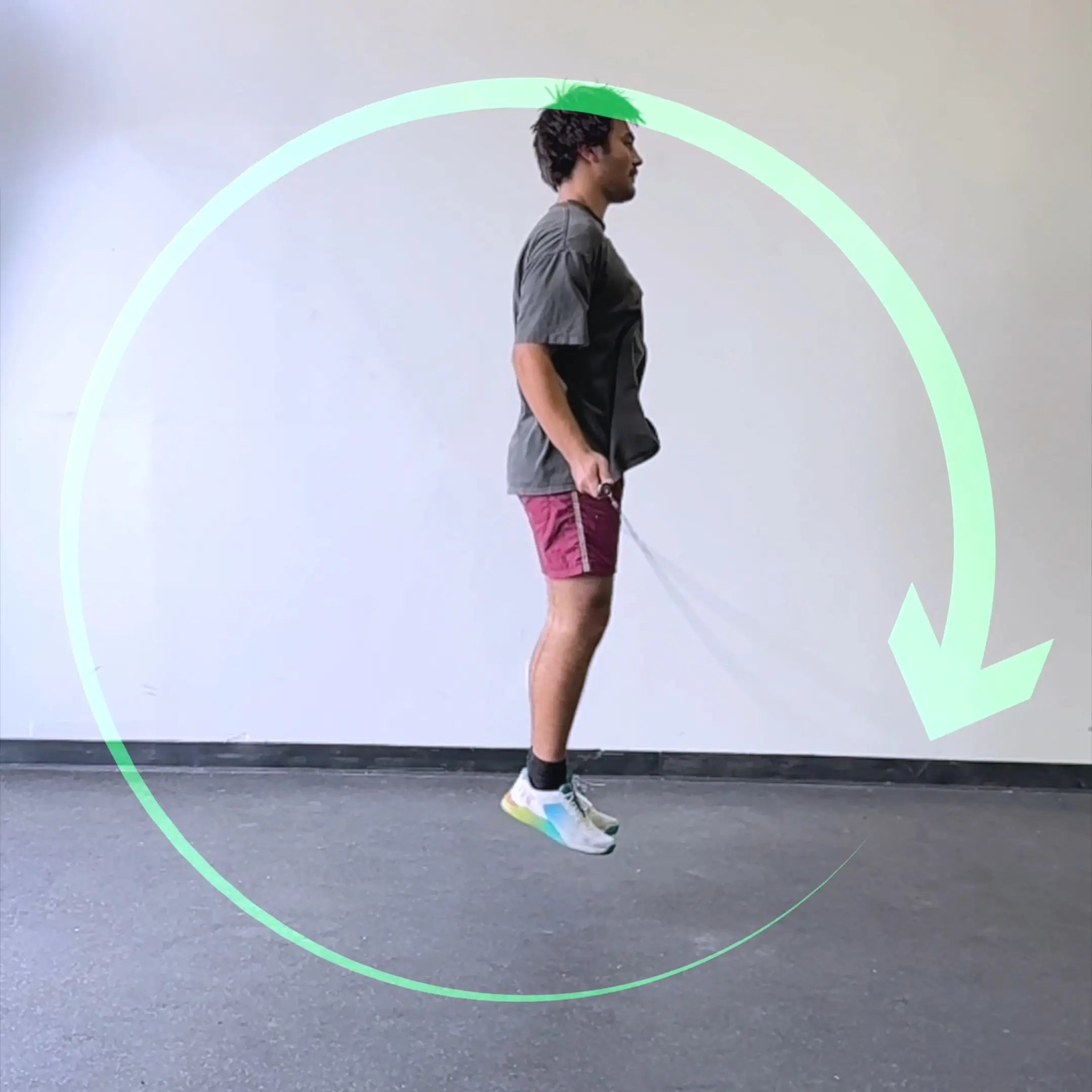
4. Nail the Active Rotation
Once your feet leave the ground, it’s time for the active rotation. This is where the rope passes under your feet right at the beginning of the jump and then again at the height of the jump:
- Flick your wrists lightly by snapping your elbows but don’t overdo it. And don’t overextend your arms. Elbows should maintain a slight bend.
- Keep the speed of your active rotation similar to your passive rotation to maintain rhythm.
- Anchor your hand position to keep your rope’s path consistent.
- Listen for the rope tapping the ground at the beginning of your jump and again while in the air. This audible cue is imperative to maintain tempo.
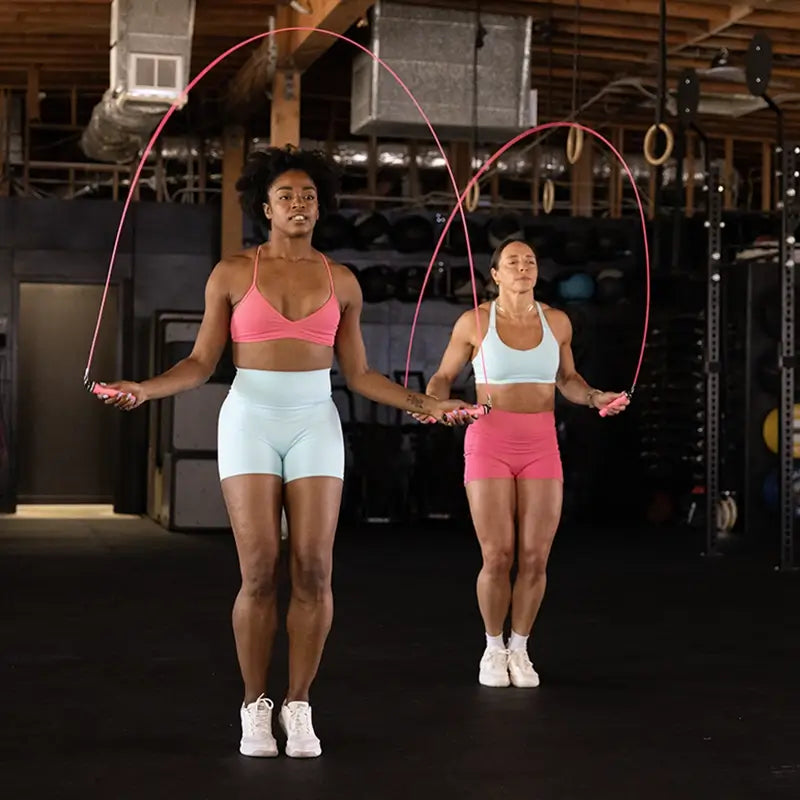
Stringing Double Unders Together
Now that you’ve got the basics down, how do you transition from one double under to the next? It’s all about what happens on the way down.
After completing your first double under:
- Let the rope reset into the passive rotation as you descend.
- Control the rope’s speed so it’s in position at the moment of your next jump.
- Initiate the next active rotation as soon as your feet leave the ground again.
- Maintain the same height for every jump, whether it’s your first or your tenth.
Consistency comes from maintaining this rhythm over and over. Use the tap-tap sound of the rope on the ground as your guide. Think of it as a normal heartbeat after every jump: boom-boom, jump boom-boom.
Common Pitfalls and How to Fix Them
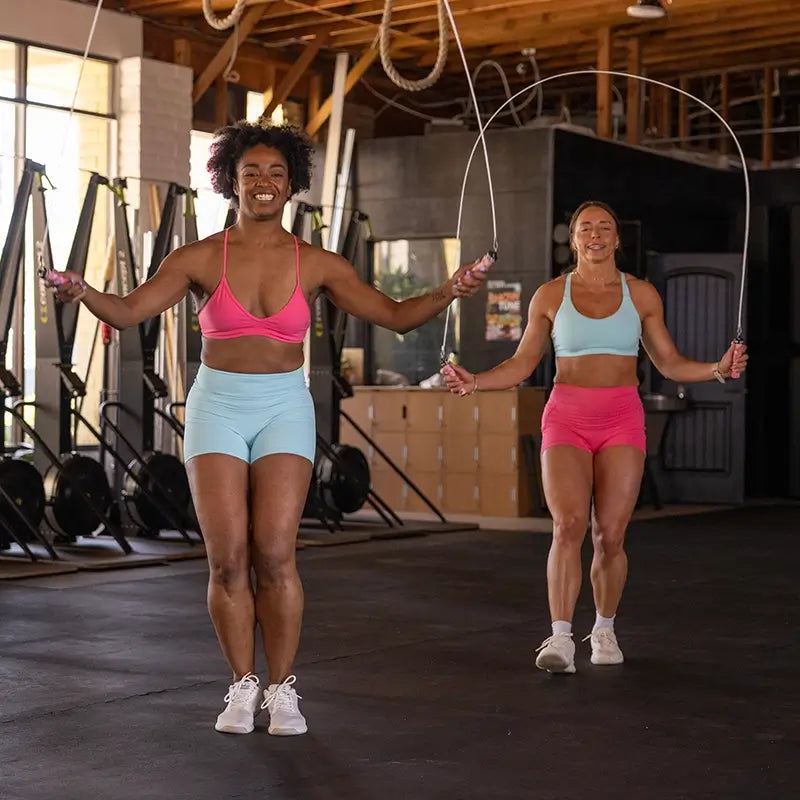
- Overthinking the Speed
Many beginners believe they need lightning-fast rope speed. In reality, double unders rely more on timing and feel than speed and aggression. Start slow, focusing on rhythm, and gradually increase speed as you gain confidence. - Flared Elbows
Keep your elbows down and slightly pulled back. Flared elbows shorten the rope’s path, increasing the likelihood of tripping. Check the length of your rope. Oversized ropes force the arms wide.
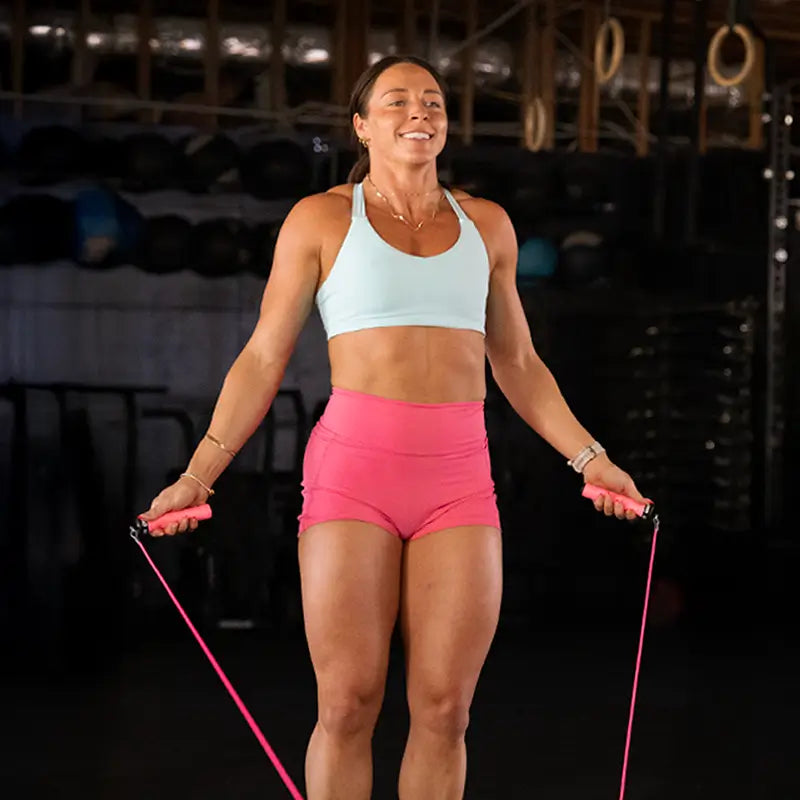
- Tense Shoulders
Relax your shoulders! Tension wastes energy and disrupts your rhythm. Focus on fluid, snappy wrist movements. Refer to #2 regarding rope size. - Skipping the Passive Rotation
Rushing straight into the active rotation without setting up properly will throw off your timing. Always establish the passive rotation first.
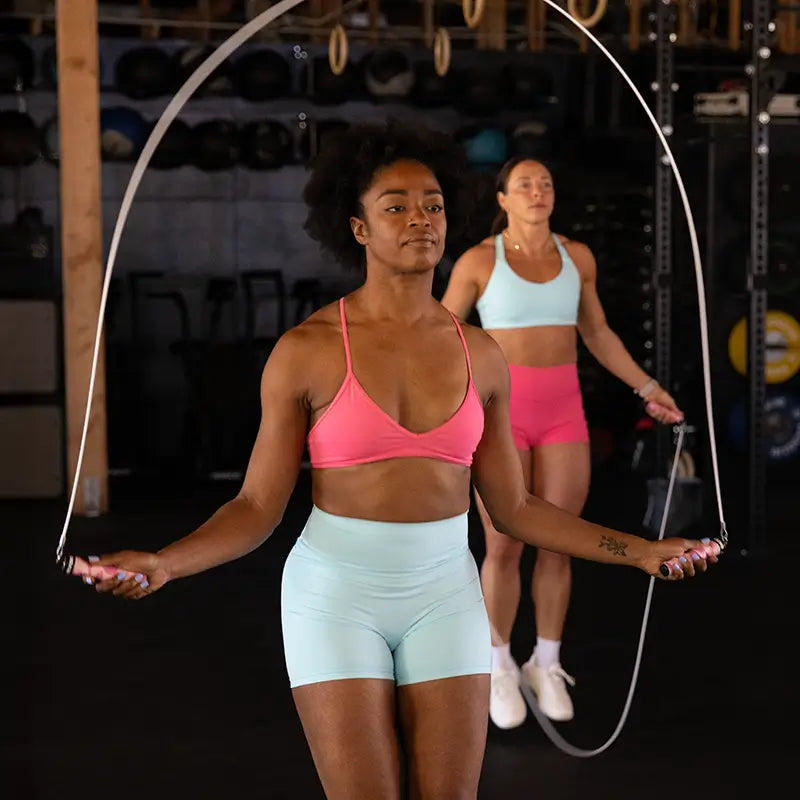
- Inconsistent Jump Height
Maintain an even jump height. Remember that more time in the air allows you to do smooth, controlled double unders. - Vision Keep your head neutral but look down at a 45-degree angle so you can track your rope’s movement and spot your hand position.
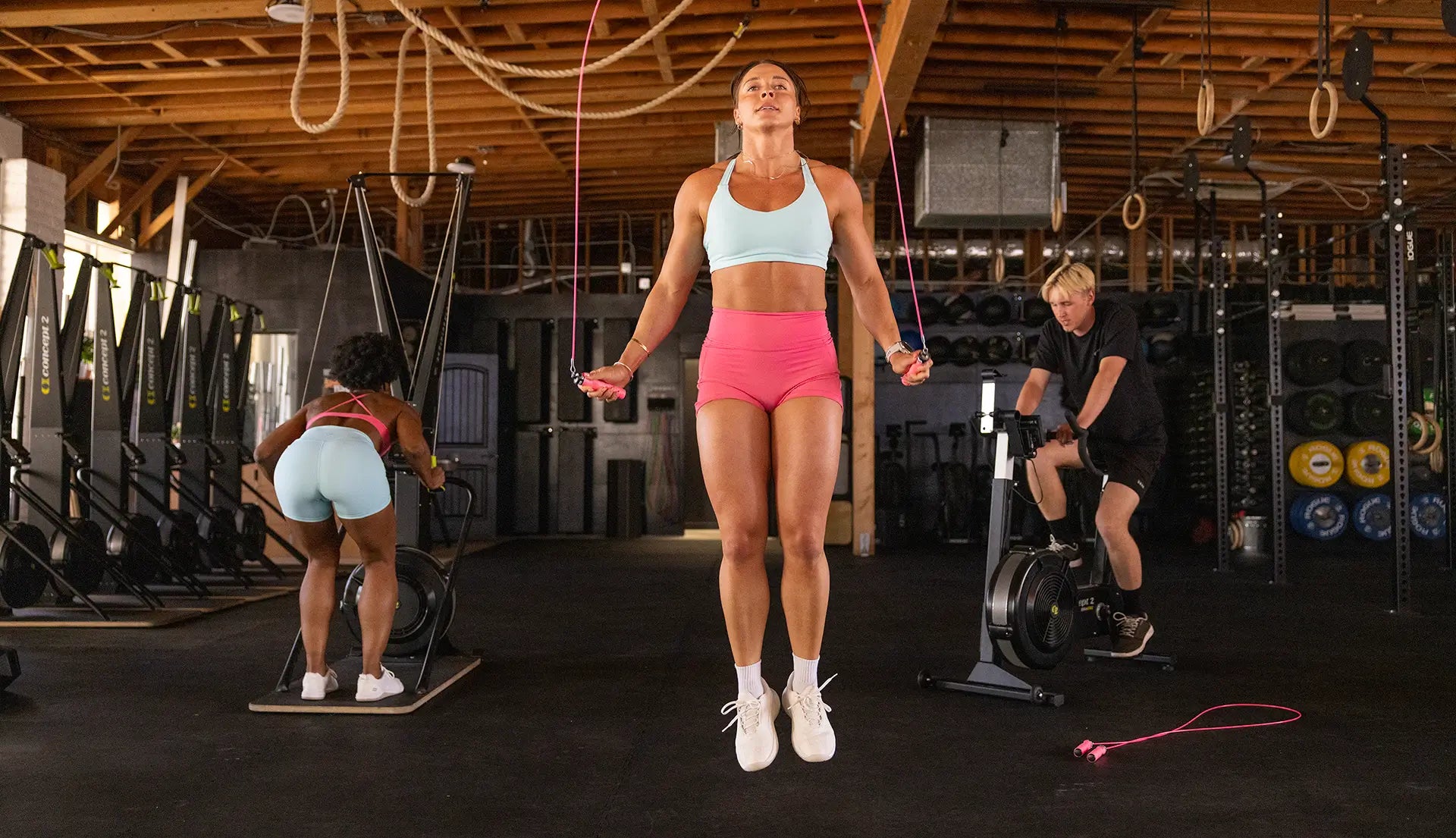
Mental Barriers and How to Overcome Them
Learning double unders isn’t just a physical challenge—it’s a mental one. The frustration of repeated failures can make you want to give up. Here’s how to keep your mindset strong:
- Embrace the Process. Double unders take time. Celebrate small victories, like completing one clean double under at a time. Think of it as a one rep max. Set aside time to practice outside of a workout.
- Reframe Failures. You caused every failed attempt. The good news is you can correct it. Analyze what went wrong and make adjustments.
- Correct Doesn’t Always Feel Comfortable. Learning new positions and feeling new sensations won’t feel comfortable at first. With enough practice they will become habits.
- Practice Patience. Especially during a workout. Set realistic goals and strive for quality reps over completed reps. Be okay foregoing the “Rx” on a workout.

DOUBLE UNDER DRILLS
Drills for Mastering Double Unders
- Proper Equipment. A cable that weighs 3-4 ounces and no longer than your height plus 2.5-3 feet is the ideal training rope for control and consistency.
- Have A Plan. Don’t keep making the same mistakes over and over and expect to improve. Figure out where you’re faltering and make the necessary corrections.
- Double Off the Deck. Learn to do one double under at a time then reset. That lets you feel and understand the timing between the passive and active rotation.
- Add More Reps Methodically. Once you’ve mastered the double off the deck you can add a second double under. Avoid trying to rattle off big sets right away.
- Video Analysis. Record your attempts from different angles. Look for issues like flared elbows, uneven jumps, or poor hand positioning.
Other helpful tutorials
Double unders may seem daunting, but with the proper understanding, the right mindset, technique, and persistence, they’re within your grasp. Remember: It’s not about speed or brute force—it’s about timing, rhythm, and control.
By following this guide, you’ll uncover the secrets of double unders and join the ranks of those who once struggled but now thrive. Once you’ve mastered this skill, share your success, tag us, and celebrate your journey. Welcome to the Double Under Club! Now go Elevate Your Fitness!
Shop & Save
Discounts exclude limited editions, gym packs, replacement parts, and new products.

